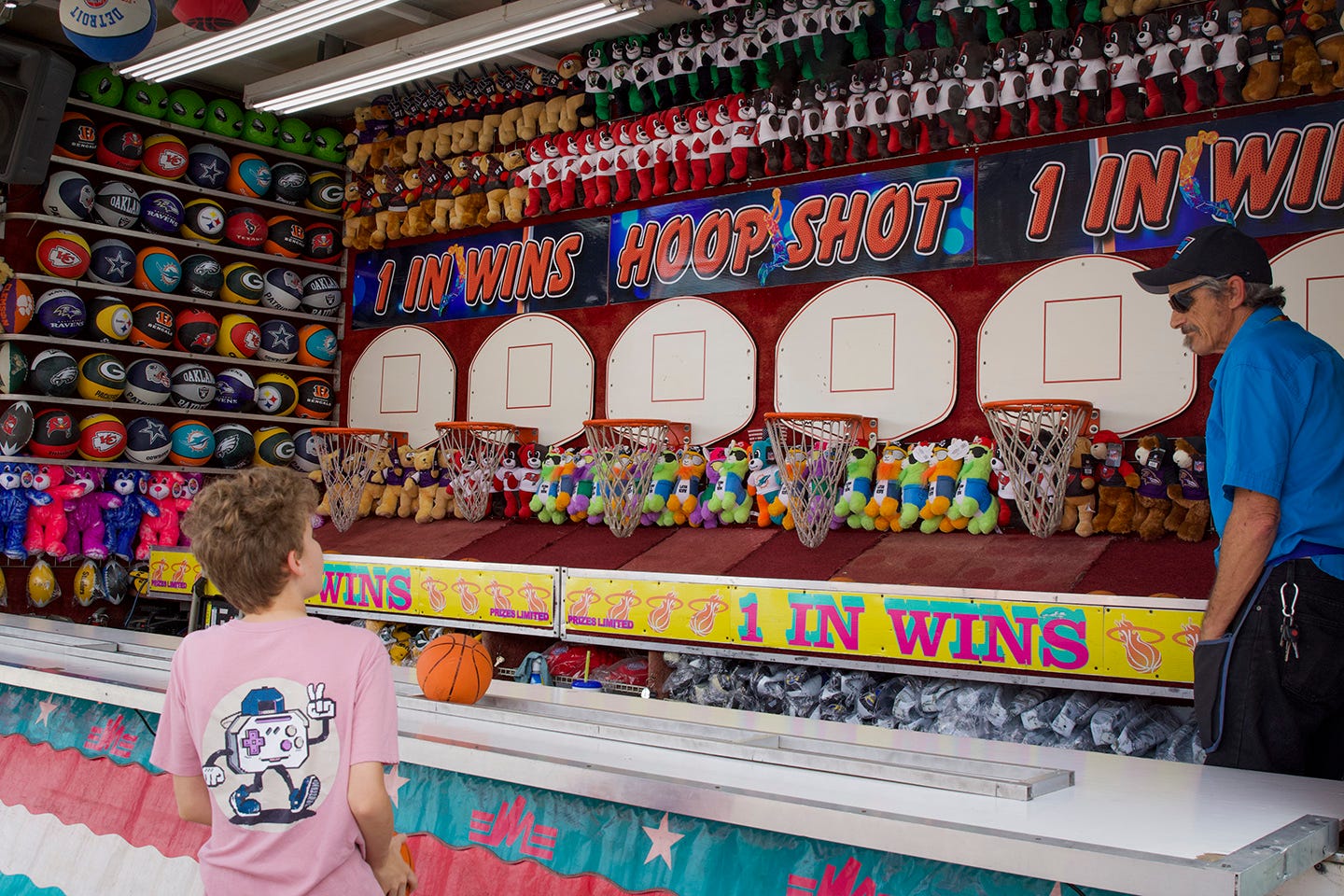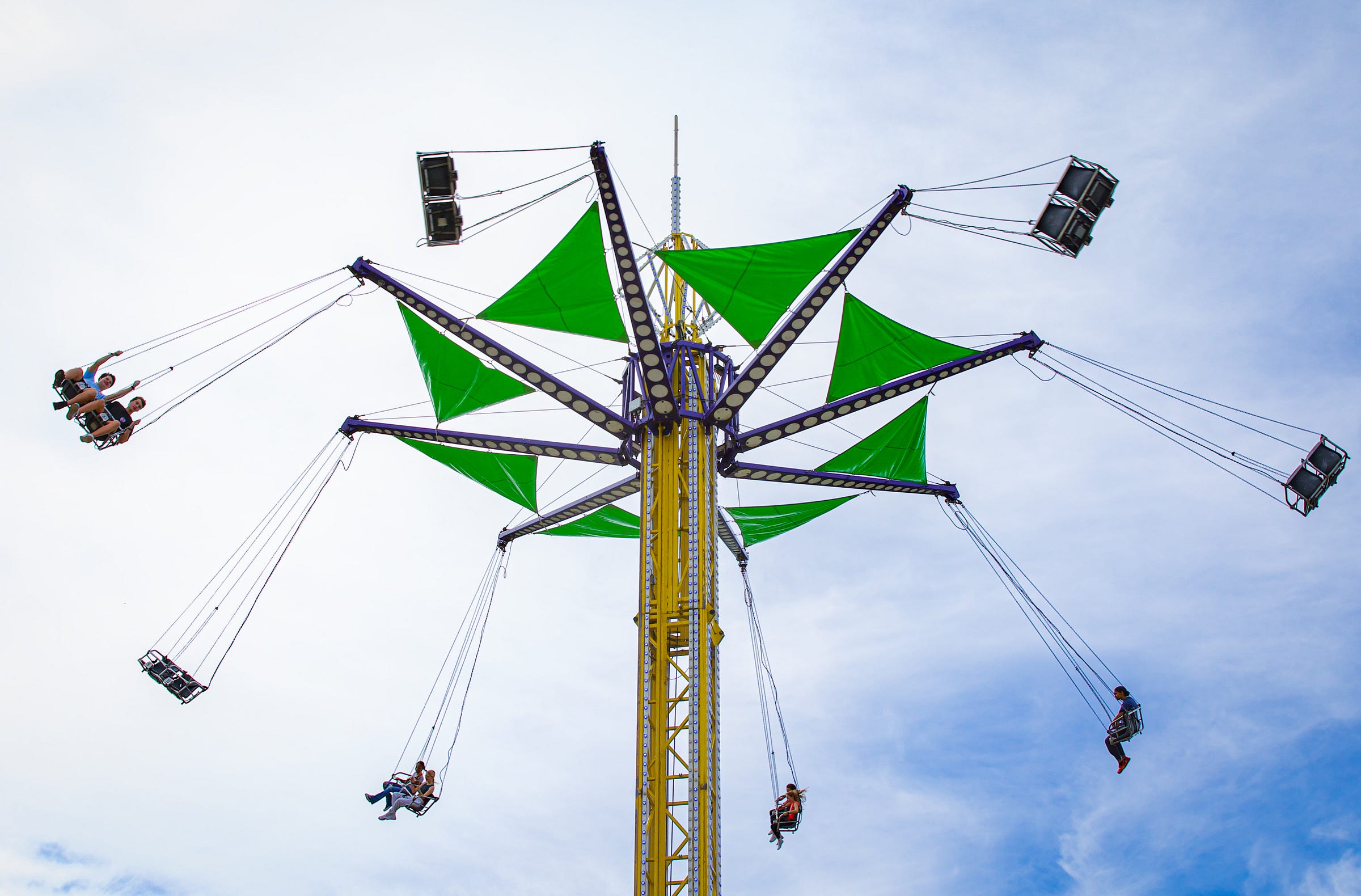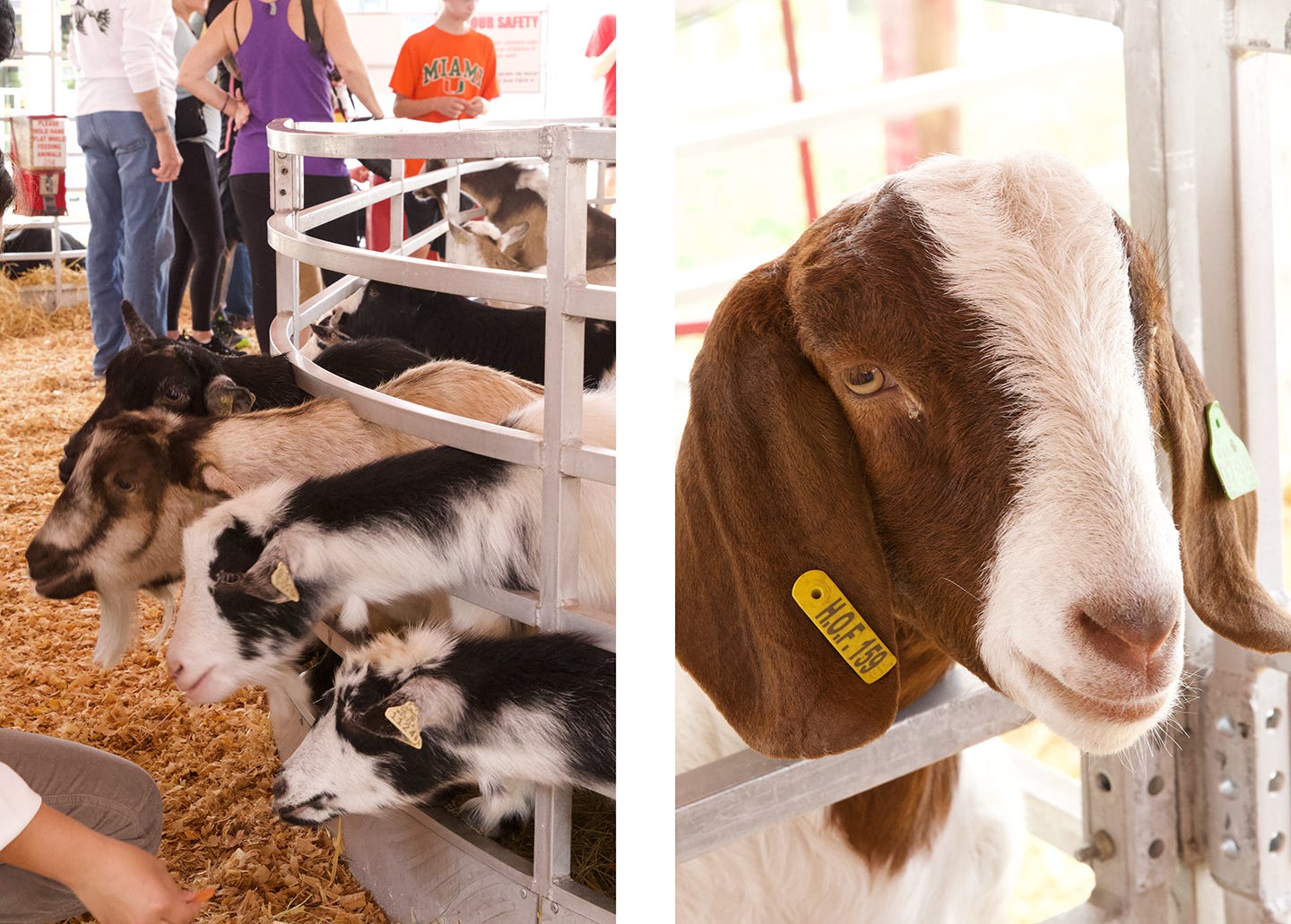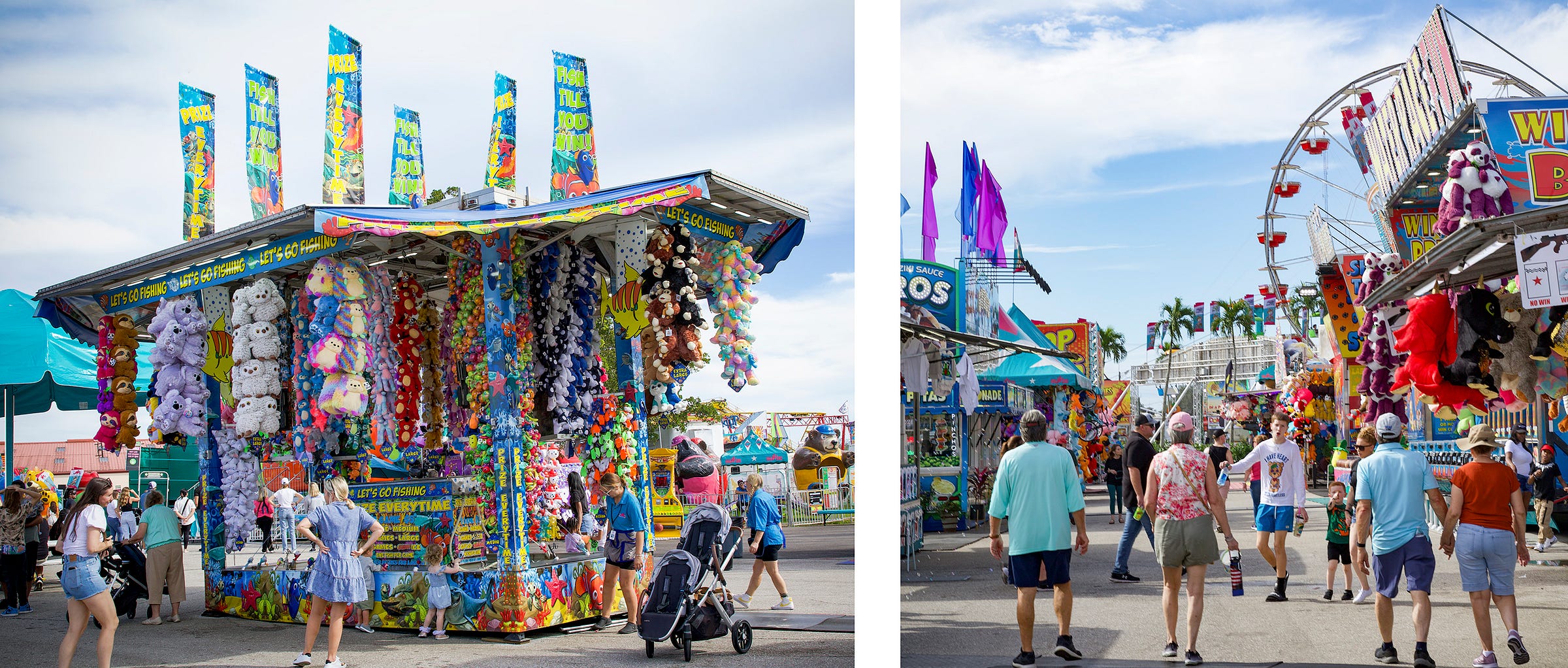Yes, Let’s Go Back to the Fair
When rapid change and technological innovation define an era, the fair stubbornly remains the same — and that's a good thing.
Late one afternoon this past January, the Carnival Man stood inside his booth on the midway of the South Florida Fairgrounds. Behind him were six basketball hoops, rows of color-coded stuffed bears, and sports-themed basketballs stacked high on each opposing side. He wore dark sunglasses and a bright blue shirt with a lanyard draped across his neck, holding an ID badge and a cross that dangled below.
The Carnival Man, who looked to be in his mid-60s, was slightly hunched over and expressionless, but seemed enthusiastic enough when calling out to the prospective players before him. “It’s five dollars, cash only, for two chances to score,” he hollered to onlookers on the walkway. “Make one basket, get a prize.”
It’s a line he’s uttered countless times before to families with young children, rowdy teenagers, couples on a date, or random singletons at the fair. In fact, just outside and beyond the Carnival Man’s domain, other workers stood in their booths, surrounded by similar stuff animals and colorful prizes, calling out in the same way, searching for someone — anyone — to take the bait and play a game.
If these sights and sounds seem familiar to you, then perhaps, at some point you’ve been to the fair. Not just the South Florida Fair, but any other county or state fair throughout Florida or even the United States.
Fun fairs, or carnivals, have been traveling the country since the late 1800s — freak shows and all. But it wasn’t until 1912 when the South Florida Fair first opened its colorful and crowd-pleasing attractions to people of all ages and backgrounds. With each new year, the fair brings promises of adventure, carnival food, fast rides, shows, livestock displays, and a hearty dose of nostalgia.
There’s even a good chance that you’ve met or seen Carnival Man before, like I had. It was exactly one year ago, plus or minus a day or two, in this very same booth, that my husband won a red and black Tampa Bay Buccaneers basketball. Carnival Man nodded when I shared my memory. “Yup, that was me,” he said. “I’ve been working this fair for years.”
The memory was more than Carnival Man, too. It was the food stands: gyros, chicken pitas, corn dogs, fresh baked pizza, caramel apples, curly fries, nachos, fried Oreos, and more. It was the smell of deep-fried and full of flavor desserts, smoked meats and firewood. It was the flags, waving with the afternoon wind, enticing visitors to eat their way through the fair. Each smell, each flavor unlocked a memory bank of flashbacks to last year’s fair and the fairs before that. And while recollections may vary, it’s safe to assume that the scent of fair foods elicit positive thoughts and memories, perhaps from childhood or good times with friends and family.
Nostalgia plays a primary role in the enduring legacy and success of the fair. Though there are occasionally new rides or shows or experiences, the fairgrounds and attractions and even the carnival workers appear to be the same, and at the very least, evoke a familiar and comforting emotional response.
On the midway that afternoon, I noticed very few fairgoers who were staring down into their phones. Instead, I saw several couples walk hand-in-hand, friend groups laughing loudly and eating treats, kids running past kids, moms pushing strollers and dads who carried young ones on their shoulders. Everyone looked engaged. There was joy. There was togetherness. There was a spirit of adventure.
Among the more adventuresome attractions at the fairgrounds, the big slides, miniature roller coasters, oversized ferris wheels, towering swings, gravity trains, spin rides, and rides that go upside down — the true heartbeat of the fair — twisted, swung and flung riders from the ground to the sky, and back again.

And, then, there were the animals. Baby llamas, goats, calves, ponies, and even a baby camel lounged in a miniature, heavily-shaded petting space, where South Floridians could experience, even if just for a moment, the sights, sounds and feel of farm life. Real animals soft to the touch, to feed and to connect with. It’s not something that happens too often as modern day agriculture is far removed from urban and suburban societies. And, yet, here it was — the storybook version of the farm — at the fair. Just like last year and the years before that.
In the past two to three decades, rapid technological innovation has undoubtedly disrupted human-to-human interaction. We all know this to be true. And likewise, we all know it can’t be stopped. So when places like the fair produce human moments such as togetherness, adventure, warmth and affection, we should consider it a victory for society. So, yes, let’s go back to the fair. Let’s go back again and again.










You had me at nostalgia... and not looking at phones!
Thank you for the nostalgia! I have never been to fairs of this scale in the USA, only smaller scale ones in Toronto Canada. Such an interesting combination of games, rides, and food though. As a kid, I liked the rides, as an adult, the food. Haha, good times.